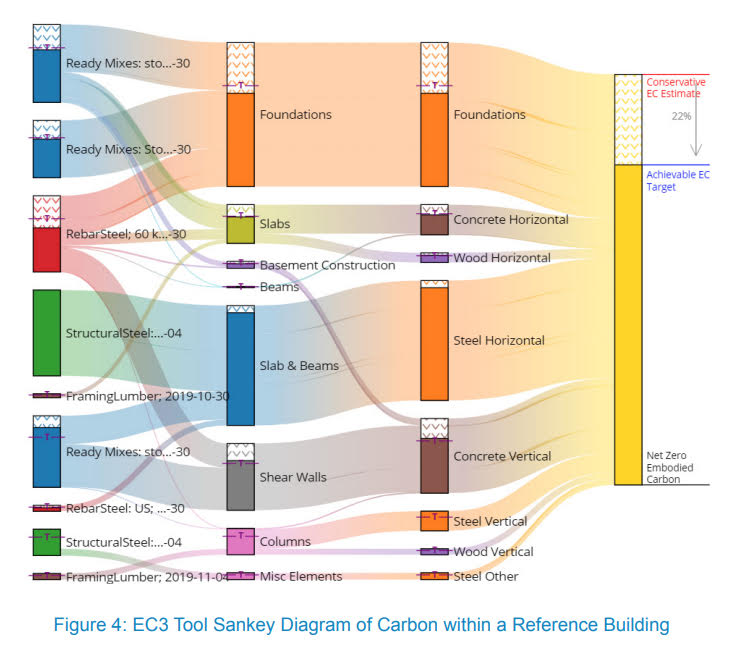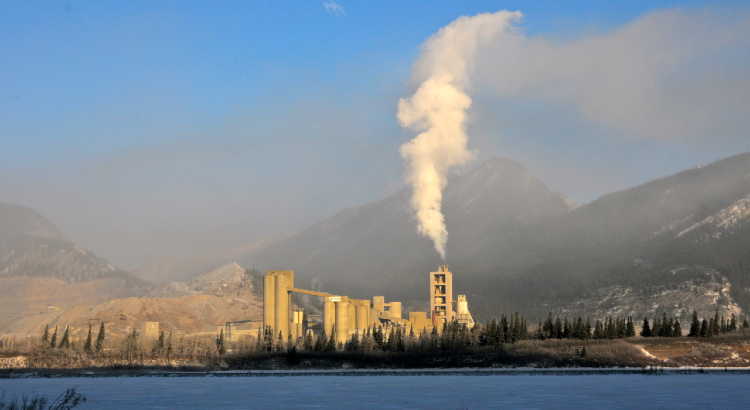The push to reduce the embodied carbon from materials used in construction has always faced an enormous hurdle: It’s difficult for architects and contractors to quickly evaluate the differences in carbon emitted in the process of manufacturing two comparable products.
A new nonprofit called Building Transparency hopes to change that.
While it is well known that buildings are responsible for nearly 40 percent of the world’s carbon emissions, efforts to reduce those emissions have concentrated on emissions from energy used building operations. The key role of carbon embodied upfront in products and materials used in construction has only recently gained prominence.
With more than 26,000 environmental product declarations (EPDs) already in its database, Building Transparency is making good headway, especially for concrete mixes representing the vast majority of EPDs included to date.
Embodied carbon is difficult to measure and current data sources are of varying quality. Released in November 2019 at Greenbuild in Atlanta by the Carbon Leadership Forum, the Embodied Carbon in Construction Calculator (EC3) was designed to address this challenge by making information more accessible and comparable across products and categories.
Interest in the new tool has been so brisk that the developers decided to spin off Building Transparency as a new organization with a mission to provide the open-access data and tools necessary to enable broad and swift action across the building industry in addressing embodied carbon’s role in climate change.
“It became clear once EC3 launched that we were just at the starting point,” notes Stacy Smedley, Building Transparency’s executive director, as well as director of sustainability for Skanska USA.
In addition to maintaining the calculator tool, Smedley is focused on building an organization that can take over its ongoing management and growth. EC3 was originally developed by a team of partners, including Skanska USA, C Change Labs, and Microsoft, in addition to the Carbon Leadership Forum.
When Microsoft first announced its commitment to testing EC3, the building world noticed. The iconic company brought credibility and potential for vast impact to the project, which was still a new idea at the time.
Since then, Smedley has doubled down on tech sector leadership.
“If you look at what [tech sector leaders] can do when they come together behind something, it creates pull that makes it easier for other folks who are trying to push new approaches into the market,” she says.
The Building Transparency board of directors includes Amanda von Almen (Salesforce), Andreas Gyr (Google), Julia Raish (Amazon), Katie Ross (Microsoft), and Lauren Bonar Swezey (Facebook) — a veritable who’s who of tech-sector green-building leaders.
As she grows the organization, which is now hiring, Smedley remains focused on her original objective for EC3. “As a user at a construction company, I was trying to get information about embodied carbon emissions in materials. I did not have the time to understand all the information in an EPD.”

The bottom line is that understanding embodied carbon requires complex lifecycle analyses of products, which then feed into even more complex life cycle assessments (LCA) of whole buildings.
By making the carbon impacts of material choices more accessible, Building Transparency is “trying to promote awareness and action through transparency to get to better data,” according to Smedley. “What we’re hoping is that through the awarenesses happening there will be more adoption of whole building LCA to help optimize materials choices.”.
As momentum builds around embodied carbon generally, and EC3 specifically, companies have stepped up to analyze their products and have them included in the database. While concrete represents the lion’s share of EPDs included to date (and incidentally, the largest emitter of carbon pollution among building materials), nearly 2,000 other products are also included. The market rationale for transparency grows stronger with each new EPD and as green building platforms — including LEED 4.1, ILFI’s Zero Carbon Certification, and the Buy Clean California Act — increasingly reference EC3.
Clearly, EC3 has struck a chord.
“LCA science is a complicated field, which is why we started with one sliver where we thought we could take action relatively quickly,” Smedley notes. As more companies and products are added to EC3, competition is growing around embodied carbon. With construction project teams trying to meet client demands for carbon neutral buildings, products with lower embodied carbon have a competitive advantage.
The theory behind EC3 is that greater transparency can lead to fundamental change in industries and products
“If we waited for everyone to agree on everything, we’d never make any progress,” said Smedley, who acknowledged that the field is still evolving.
But with influential businesses in the lead, and a new nonprofit dedicated to its development, EC3 and embodied carbon transparency is poised for significant growth.
Brad Kahn is communications consultant based in Seattle, Washington. His practice focuses on climate, forests and green building, with clients including the Forest Stewardship Council, David and Lucile Packard Foundation, International Living Future Institute, and Kendeda Fund. He has a master’s degree in watershed systems and management from the Yale School of Forestry and Environmental Studies. PHOTO AT TOP: Cement is the leading contributor to embodied carbon in construction materials.


